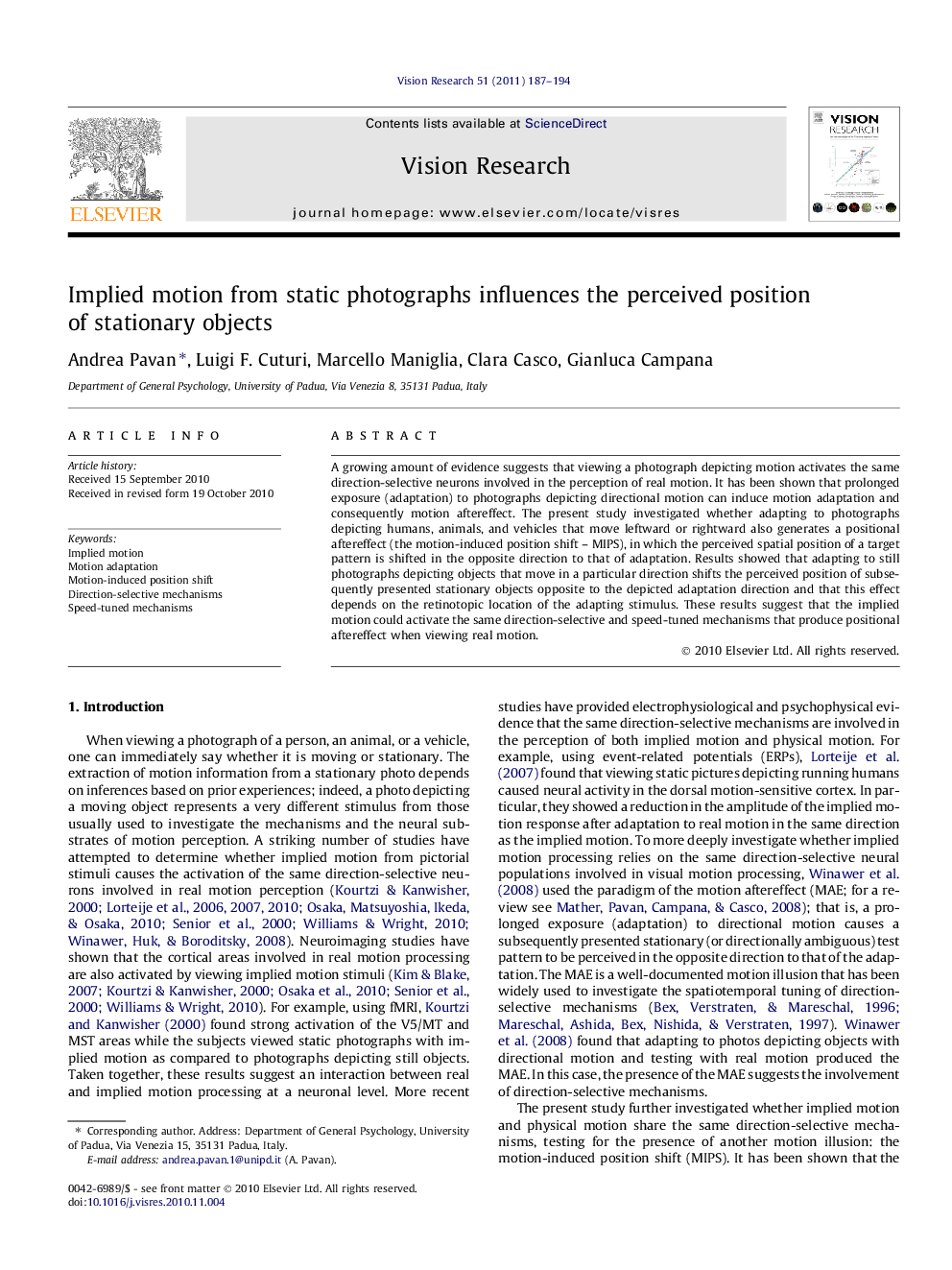| Article ID | Journal | Published Year | Pages | File Type |
|---|---|---|---|---|
| 4034355 | Vision Research | 2011 | 8 Pages |
A growing amount of evidence suggests that viewing a photograph depicting motion activates the same direction-selective neurons involved in the perception of real motion. It has been shown that prolonged exposure (adaptation) to photographs depicting directional motion can induce motion adaptation and consequently motion aftereffect. The present study investigated whether adapting to photographs depicting humans, animals, and vehicles that move leftward or rightward also generates a positional aftereffect (the motion-induced position shift – MIPS), in which the perceived spatial position of a target pattern is shifted in the opposite direction to that of adaptation. Results showed that adapting to still photographs depicting objects that move in a particular direction shifts the perceived position of subsequently presented stationary objects opposite to the depicted adaptation direction and that this effect depends on the retinotopic location of the adapting stimulus. These results suggest that the implied motion could activate the same direction-selective and speed-tuned mechanisms that produce positional aftereffect when viewing real motion.
Graphical abstractAfter prolonged adaptation to static images representing (implied) directional motion, the position of subsequently presented stationary objects tends to be perceived as shifted in the opposite direction to that of adaptation, similarly to what occurs with real motion signals.Figure optionsDownload full-size imageDownload high-quality image (49 K)Download as PowerPoint slideResearch highlights► Prolonged exposure (adaptation) to implied motion. ► Bias to the perceived position of stationary objects (test pattern). ► Perception of implied motion and real motion could share the same neural mechanisms.
